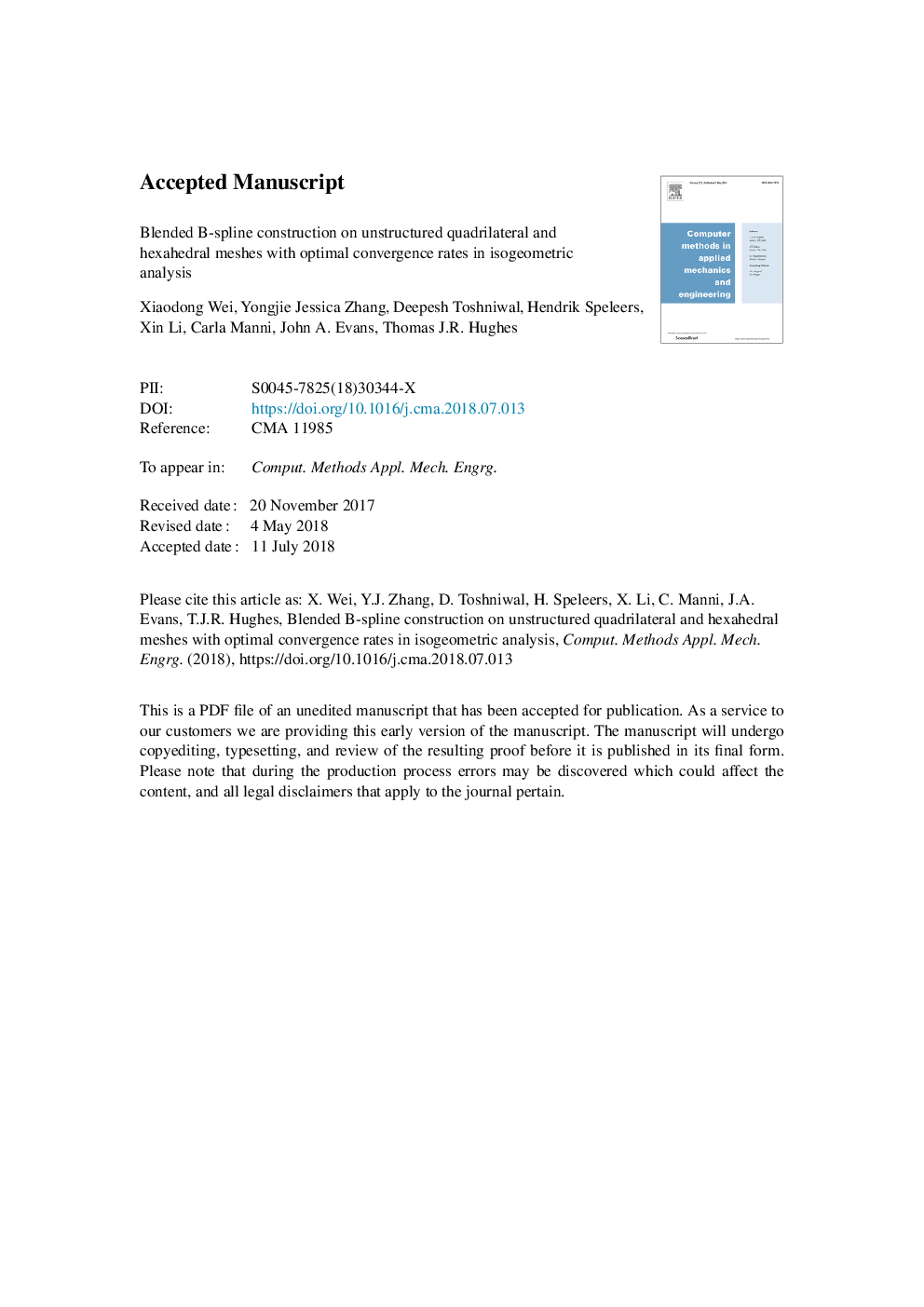| Article ID | Journal | Published Year | Pages | File Type |
|---|---|---|---|---|
| 6915283 | Computer Methods in Applied Mechanics and Engineering | 2018 | 34 Pages |
Abstract
We present a novel blended B-spline method to construct bicubic/tricubic splines over unstructured quadrilateral and hexahedral meshes for isogeometric analysis. C1
and (truncated) C2 B-spline functions are used in regular elements, whereas C0
and (truncated) C1 B-spline functions are adopted in boundary elements and interior irregular elements around extraordinary edges/vertices. The truncation mechanism is employed for a seamless transition from irregular to regular elements. The resulting smoothness of the blended construction is C2-continuous everywhere except C0-continuous around extraordinary edges and C1-continuous across the interface between irregular and regular elements. The blended B-spline construction yields consistent parameterization during refinement and exhibits optimal convergence rates. Spline functions in the blended construction form a non-negative partition of unity, are linearly independent, and support Bézier extraction such that the construction can be used in existing finite element frameworks. Several examples provide numerical evidence of optimal convergence rates.
Related Topics
Physical Sciences and Engineering
Computer Science
Computer Science Applications
Authors
Xiaodong Wei, Yongjie Jessica Zhang, Deepesh Toshniwal, Hendrik Speleers, Xin Li, Carla Manni, John A. Evans, Thomas J.R. Hughes,
